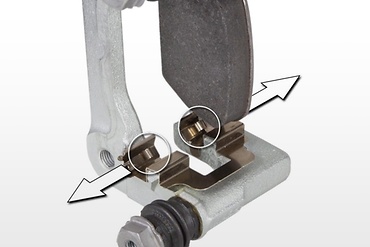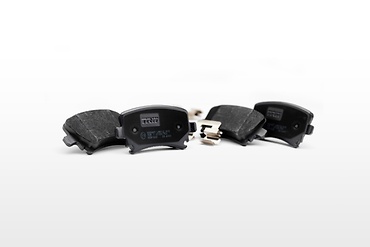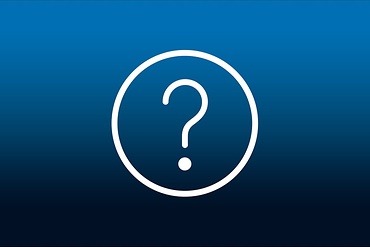TRW brake pads are manufactured to correspond to the original parts and are supplied to our customers with the suitable installation accessories. Due to the many different pad variants and accessory parts, uncertainties can occur during installation with regard to the correct procedure or the correct position of the pads in the caliper. If the brake pads or accessories are installed incorrectly, this will inevitably lead to problems – usually with braking noises or reduced braking performance. This How-to guide provides some information and tips.
How-to-guide
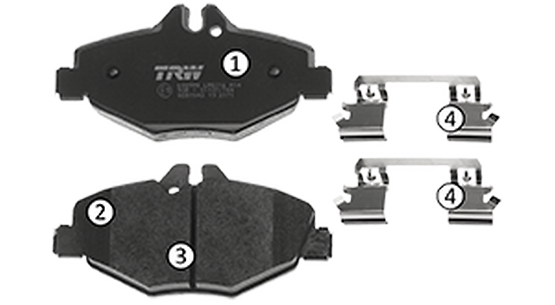
Before describing the positions of pads and accessories, we first want to explain some of the terminology.
① Shim: damping unit fixed on the rear pad plate.
② Chamfer: a sloping surface at the edge of the pad material (on one or two sides).
③ Slot (rain groove): allows fast draining of water, dirt and dust.
④ Pad guide plate: keeps the pad in position, preventing rattling noises and ensuring resetting after brake release.
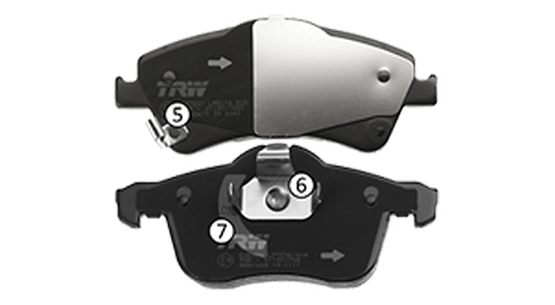
⑤ Mechanical wear indication: creates an audible signal through contact with the brake disc when the pads are worn.
⑥ Piston spring: keeps the piston-side pad in its position.
⑦ Quadrant recess: achieves a friction area on the pad which is parallel to the friction area of the disc, counteracting uneven wear.
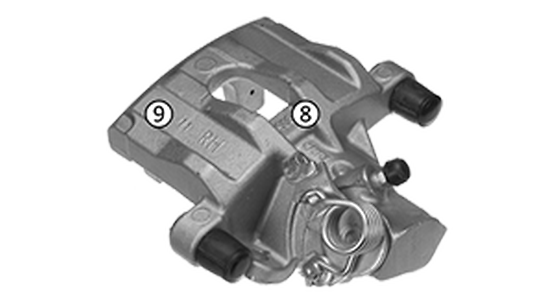
⑧ Piston side: for fist-type and floating calipers.
⑨ Fist finger side: for fist-type and floating calipers.
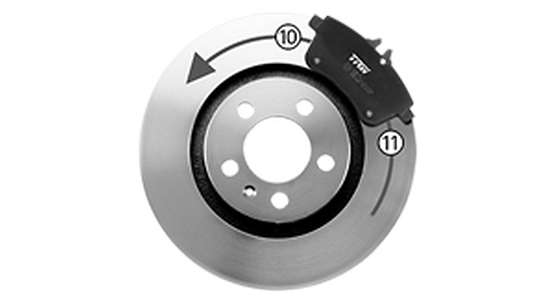
⑩ Disc run-out: direction in which the disc exits the brake caliper in forward travel (arrow).
⑪ Disc run-in: direction in which the disc enters the brake caliper in forward travel (arrow).
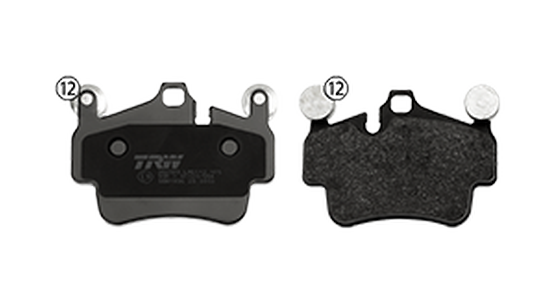
⑫ Damper weight: serves as a balancing weight for reducing vibration and noise.
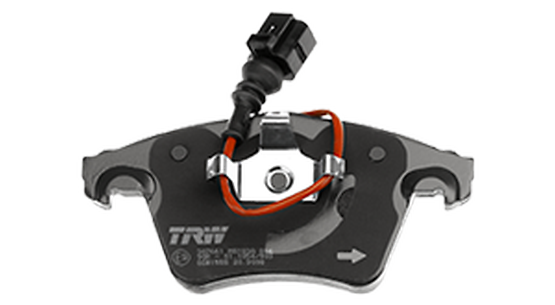
This practical advice cannot describe all design measures and models. Still, there are some general rules which we want to explain in more detail.
Important: as a rule, the manufacturer's information and instructions must be observed!
Arrow: If there is an arrow marking on the shim or the rear pad plate, the brake pad has to be installed so that the arrow points in the direction of disc run-out.
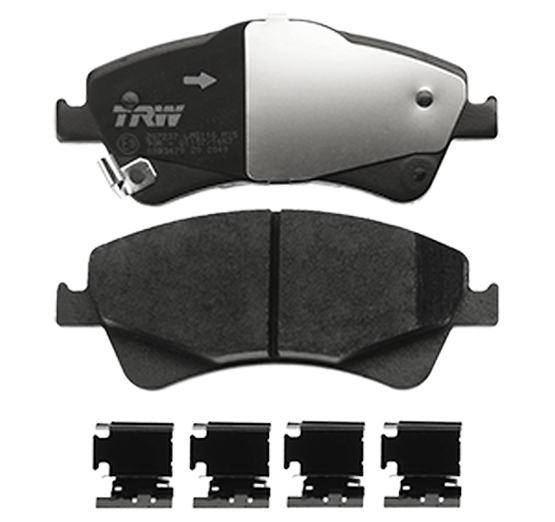
Quadrant recess: The brake pad with the recess has to be installed on the piston side of the caliper (floating and fist-type calipers). For a fixed caliper, all four pads of a set may feature a quadrant recess.
Chamfer: The position of the chamfered edge of a brake pad is determined after extensive noise analysis. For most applications, the chamfered edge is placed at the disc run-in. On pads with different chamfers, this applies to the larger chamfer. An example for such an application can be found in TRW Service Information XZS110.
Piston spring: The brake pad with riveted piston spring is installed on the piston side of the caliper (floating and fist-type calipers).
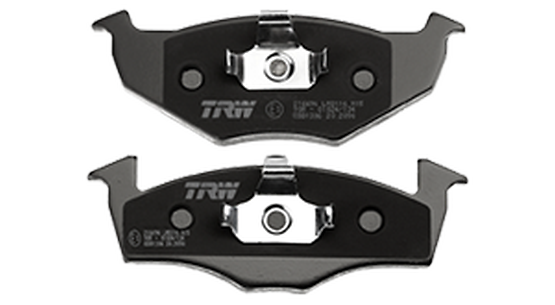
Note: There are a number of pads with springs which are additionally anchored on the fist finger side of the brake caliper housing!
Wear indication: Usually, only two of the four pads in a pad set are equipped with a mechanical or electric wear indication. For symmetrical pads, these are installed on the piston side, as this is where greater pad wear is expected.
Given the great variety of pad guiding plates, the installation position cannot be determined solely based on the design. The only way is to check the associated documentation. For pad set GDB1732, for example, the instructions from TRW Service Information XZS168 apply.
Further information on brake pads, where the installation position is defined by their design and accessories, can be found here:
TRW Brake Pad Information Sheet
All TRW Service Informations previously published on the topic of pad installation and accessories can be found in the overview in the following PDF file.
ZF Aftermarket product range
Discover the complete portfolio of brakes in our product catalog.
